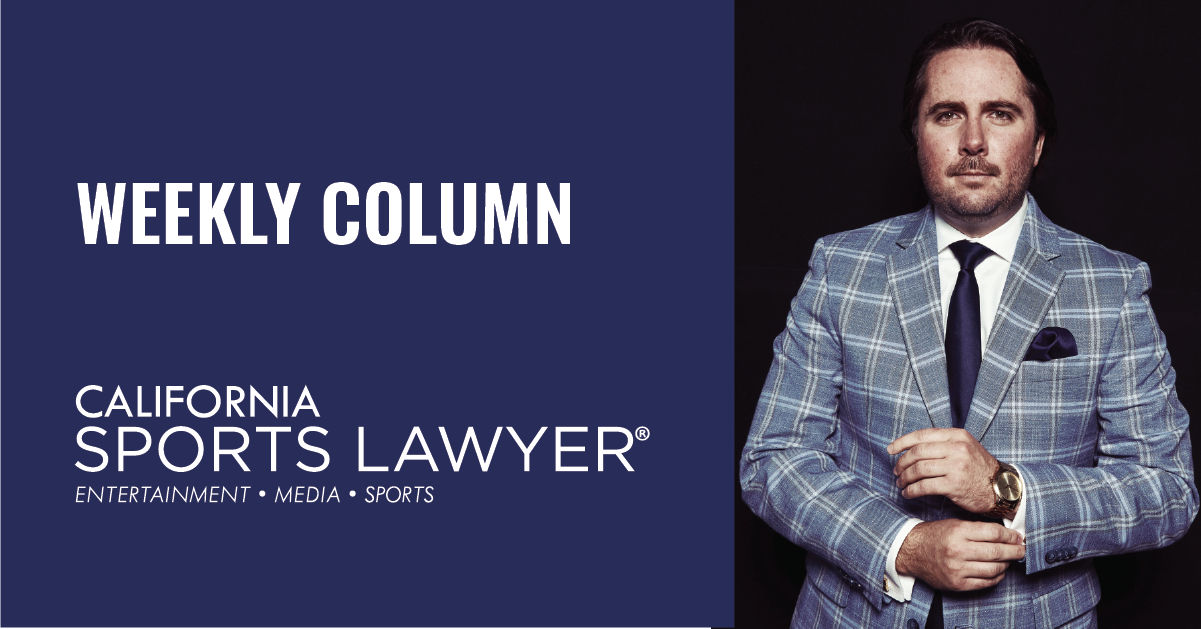In his capacity as a Columnist for California Sports Lawyer®, Founder Jeremy Evans has written a column about studio and streamer strategies in response to changing consumer trends with entertainment, media, and sports content.
You can read the full column below.
~
There are three phenomenon that are occurring in the entertainment, media, and sports marketplace today. Foundationally, the three phenomenon are based on changes in industry trends.
The first industry change is the reduction in cable subscriptions with a move to streaming platforms and applications to access content, whether paid, with advertisements, or sometimes free (e.g., "freemium"), which has been occurring for the last five to ten years. The second is that consumers, in an increasing amount, do not want to be overwhelmed with options on watching content even if there seems to be an insatiable appetite for consumption of entertainment and sports content (e.g., subscription fatigue). Consumers also want to access content more quickly and in a shorter period of time, particularly sports content. The third industry trend is a business-decision focused one, where cable consolidation will be based on consumer behavior. Specifically, future changes to streaming and cable packaging will be attempted to be led by the studio executives in an effort to predict consumer behavior through data, analytics, and artificial intelligence, but also to better control investment and financial outcomes.
The third industry trend might be harder to see through as consumers are often ahead of the curve as businesses attempt to react to consumer trends. The difference in today’s market is that data is much easier for businesses to obtain and more likely to be used in decision-making. With the aforementioned in mind, it is leading to the following three phenomenon.
Bundling and Content Consolidation
Studio executives are exploring partnerships with pay television platforms like YouTube Live and Hulu Live, but as noted by The Hollywood Reporter, the subscription or paid customer numbers are significantly less than subscription video on demand (SVOD) streaming services like Netflix, Hulu (SVOD version), Disney+, Max, or Amazon Prime Video, by about 40-70 million people in the United States despite pay television’s recent growth. There is also the strategy of partnering with other studios and streamers to create a one-stop-streamer-shop, which seems to be the model of Apple TV, Amazon, and Roku, but will other power players enter the competition for content? Or will studio executives look to create something new or just license its content to another streamer or platform better situated? Consolidation or working together in one form or another seems to the logical answer to changing consumer needs and trends.
Smaller Packaging of Content Mixing (e.g., rotating content)
With increased and on-going content distribution competition, there is an interest in licensing bite-sized content that is both less expensive and easier to manage. In many ways, consumers have grown weary of too much content to search and watch, so platforms are trying to manage content more efficiently so it is easily accessible my establishing a smaller offering to its customers. Furthermore, streamers, studios, and platforms are looking for ways to have certain content on certain platforms that makes sense for consumer habits based on data-based decision making, which may rotate depending on the data.
Niche Sports and Sports-Focused Content
Pickleball, squash, cornhole, lacrosse, and other sports leagues including the rebound of Formula 1, and growth of Major League Cricket, and rugby, content distributors have a lot of options for sports content. This all not to mention the XFL, LIV Golf, and USFL making their introductions and comebacks. Niche and newer sports leagues will demand less money and might be willing to make compromises when it comes to bite-sized content licensing that follows the smaller packaging phenomenon. Companies who get in early could stand to benefit tremendously.
The consumption of entertainment, media, and sports content continues to change. How content consumption looks in the coming months and years will be determined by what the people want, but also by what platforms can provide.
~
About Jeremy M. Evans:
Jeremy M. Evans is the Chief Entrepreneur Officer, Founder & Managing Attorney at California Sports Lawyer®, representing entertainment, media, and sports clients in contractual, intellectual property, and dealmaking matters. Evans is an award-winning attorney and industry leader based in Los Angeles and Newport Beach, California. He can be reached at Jeremy@CSLlegal.com. www.CSLlegal.com.
Copyright © 2023. California Sports Lawyer®. All Rights Reserved.





